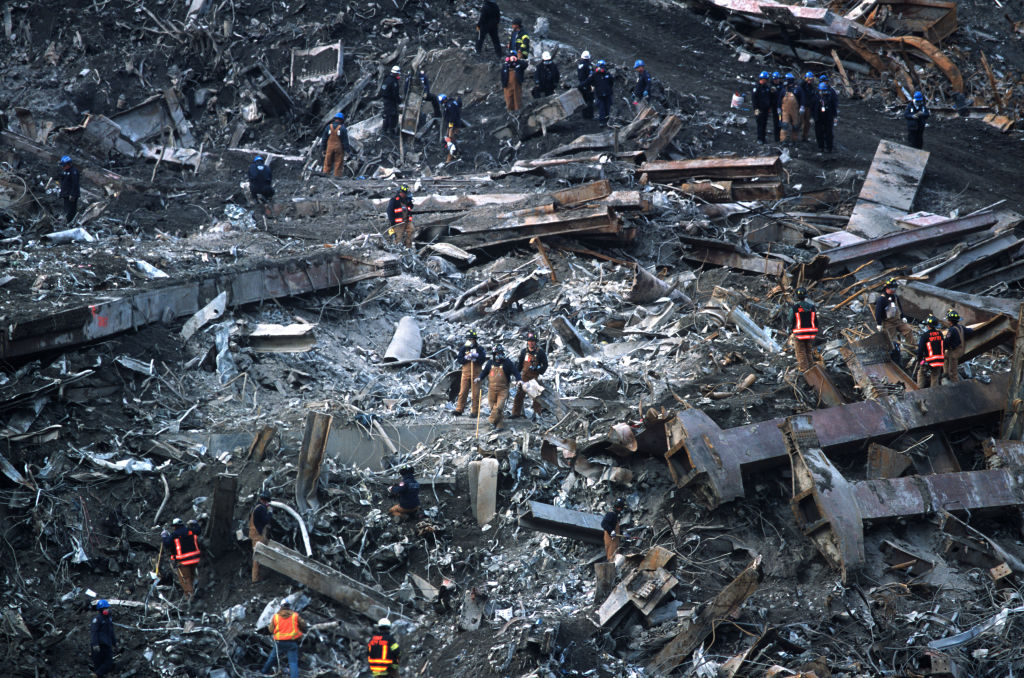
After the Twin Towers fell on Sept. 11, 2001, the thousands of people involved in rescue-and-cleanup efforts were exposed to carcinogens and other toxins as they breathed in contaminated air and dug through industrial rubble.
Studies completed since then have shown elevated rates of conditions including multiple myeloma, prostate cancer and thyroid cancer among 9/11 responders and those who worked near the site. A new study published Jan. 14 in the journal JNCI Cancer Spectrum adds another to that list: leukemia.
“After about 12 years of follow-up, there was an increase in the rate of all cancers combined, and separately for prostate cancer, thyroid cancer and leukemia,” explains study co-author Dr. Henry Sacks, a professor of environmental medicine and public health at New York City’s Icahn School of Medicine at Mount Sinai, a leader in post-9/11 health research. “This is the first time [an increase in leukemia] has been shown to be statistically significant.”
Among other substances, first responders and volunteers in the World Trade Center area were exposed to asbestos, lead, dioxins and benzene following the attacks. It can take years, or even decades, for exposure to some of these substances to result in conditions including cancer and respiratory illnesses—meaning the full toll from the 9/11 attacks has yet to be calculated. As of September 2018, 10,000 people had been diagnosed with cancers related to the attacks and 2,000 had died from related illnesses, approaching the number of fatalities that resulted from the day itself, according to Mount Sinai researchers.
The new study examined a group of nearly 29,000 people who enrolled in the World Trade Center Health Program—which offers care and medical monitoring to survivors and responders suffering from conditions including cancers, respiratory illnesses, mental health issues and traumatic injuries—from 2002 to 2013. Each participant in the study was part of the World Trade Center rescue-and-recovery effort either for a concentrated period of time shortly after the attack, or for at least 80 hours during the rest of 2001. They include law-enforcement officers, construction and telecommunication workers, and others.
The researchers focused most of their analyses on people who developed cancer more than six months after joining the program, since those who were diagnosed shortly after joining may have already been experiencing cancer symptoms. With that criteria in place, they confirmed 1,072 cancer diagnoses among 999 people in the study by matching the cases to state cancer registries.
Compared to the general population, members of the study group had a higher rate of all cancers combined, as well as higher rates of prostate cancer, thyroid cancer and leukemia, the authors found. Previous studies have not found a statistically higher risk of leukemia among 9/11 responders, which makes that conclusion the paper’s “most significant finding,” says Dr. Philip Landrigan, director of the Global Public Health Program at Boston College, and formerly part of the World Trade Center research group at Mount Sinai. (Landrigan is not a co-author of the new study.) “Those of us who have been involved in the project have been worried about leukemia risk really from the beginning,” he says, since benzene, a component of jet fuel, is a known catalyst for the disease.
Leukemia can take years to develop after exposure to a carcinogen, so past studies may have been completed too early to pick up on a heightened risk, both Sacks and Landrigan say. Many earlier studies were also smaller, and since leukemia is relatively rare, these samples may not have included enough patients to conduct a full analysis.
Steven Stellman, a professor of clinical epidemiology at Columbia University’s Mailman School of Public Health, was not involved in the new paper, but knows most of its authors professionally. He says there’s not a perfectly clear reason why this study showed an increase in leukemia while others didn’t, but notes that all 9/11 research is logistically difficult because it’s impossible to precisely measure what each individual’s exposure level was to various toxins in the aftermath of the attacks. Some of the increases in cancer may also point to more active monitoring by 9/11 survivors and their doctors, meaning more cancers get caught.
Even with the 20-year anniversary of the attacks approaching, Sacks says there’s a lot researchers don’t know about health impacts of that day. Lung cancer, for example, takes a long time to develop, so researchers may someday find that survivors are at an elevated risk of that, too. Continuing to monitor survivors, he says, could save countless lives going forward.
“It’s important to learn whatever we can so that we can do things to prevent this, whether it’s improvements in regulations about building materials, safety, things like that,” Sacks says. “We owe a lot to [the responders], both in terms of what they did then and how they’re contributing to knowledge now.”
More Must-Reads from TIME
- Cybersecurity Experts Are Sounding the Alarm on DOGE
- Meet the 2025 Women of the Year
- The Harsh Truth About Disability Inclusion
- Why Do More Young Adults Have Cancer?
- Colman Domingo Leads With Radical Love
- How to Get Better at Doing Things Alone
- Michelle Zauner Stares Down the Darkness
Write to Jamie Ducharme at jamie.ducharme@time.com